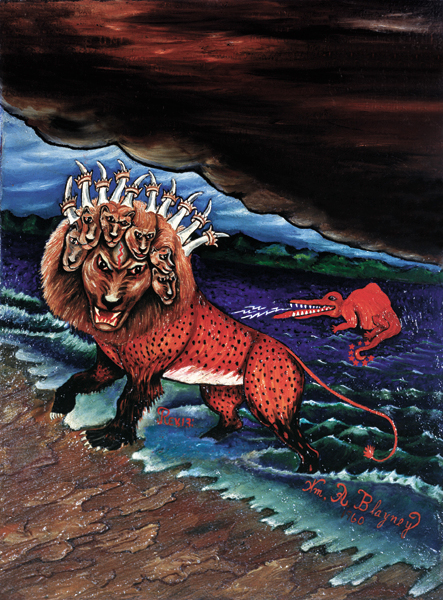Image Details

Phyllis Kind Gallery, NY
From the blood-dimmed tide a rough beast slouches forth, in William A. Blayney’s “7 Headed Lion-Beast with 10 Horns Coming Ashore” (1960). In the New Testament Book of Revelation, the Beast emerges from the sea—symbol of the abyss where he abides, of chaos and evil—bearing “blasphemous names” on its seven heads. Ever since Revelation was written down in final form in about 95 C.E., the Beast has been identified (literally and metaphorically) with almost every perceived evil of the age—from Rome (with seven heads representing Rome’s seven hills), to Nazi Germany. Many interpreters read Revelation as a symbolic text, with the Beast representing a force of evil that opposes God’s people in every age and place—a cipher into which an era can deposit its darkest fears. In the accompanying article, James Tabor surveys the ways the Book of Revelation has been read for two thousand years and searches for the sources of the millennial terrors it envisions.
